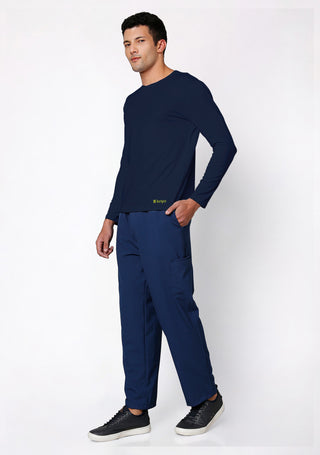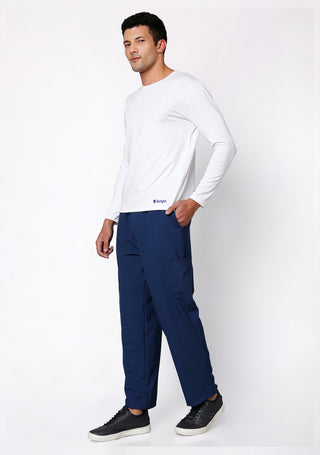Nursing is a profession rooted in compassion, resilience, and constant evolution. From its early beginnings with nuns and Nightingale to today's high-tech, fast-paced healthcare environments, nursing has come a long way. Behind every medical breakthrough or successful recovery, there's almost always a nurse lending a hand — and a heart.
On International Nurses Day, let’s not only thank our nurses but also take time to understand their journey, challenges, and incredible impact. Because nursing isn't just a job — it's a calling, a science, and a lifeline for millions.
Nursing is the Largest Healthcare Profession in the World
Nurses are the beating heart of any healthcare system. What might surprise many is that nursing is the largest healthcare profession globally, surpassing even doctors in numbers. According to the World Health Organization (WHO), there are more than 28 million nurses worldwide, making up nearly 59% of the global healthcare workforce.
In the United States alone, there are over 4.5 million registered nurses (RNs), playing a pivotal role in patient care — from primary healthcare settings to critical care units. These numbers not only reflect the scale of the profession but also highlight its importance. Nurses serve as patient advocates, educators, caregivers, and critical decision-makers.
As healthcare systems evolve, so too does the role of the nurse. From bedside care to leadership roles in healthcare policy, nurses are now central to improving patient outcomes and ensuring healthcare delivery reaches even the most remote corners of the world.
For our male healthcare professionals, we offer a wide range of comfortable and stylish scrubs for men, designed to enhance both comfort and professional image.
The Pioneer of Modern Nursing: Florence Nightingale
When we think of the roots of professional nursing, one name stands tall — Florence Nightingale. Born on May 12, 1820, in Florence, Italy, she is credited with revolutionizing the way nursing was perceived and practiced.
During the Crimean War (1853–1856), Florence Nightingale dramatically reduced the death rate of wounded soldiers simply by improving hygiene, organizing medical supplies, and training other caregivers. She gathered data and used statistical analysis — rare at the time — to convince the British government to improve military hospital conditions.
Her work went beyond battlefield nursing. She later founded the Nightingale School of Nursing at St. Thomas’ Hospital in London in 1860, which became a blueprint for nursing education worldwide. Florence’s focus on sanitation, compassion, and patient-centered care transformed nursing from an unregulated domestic duty into a respected profession.
The First Nursing Schools Were Game Changers
Though caregiving has been around since ancient times, formal nursing education didn’t take shape until the 19th century. The first official nursing school is widely considered to be the Nightingale School of Nursing, established in London in 1860.
But even earlier, in India, the School of Nursing at the Government General Hospital in Madras (now Chennai) began training nurses in the late 1800s, showing how nursing education was spreading globally.
These early institutions laid the foundation for standardized nurse training. They introduced formal curricula, ethical codes, clinical practice, and examinations. Over time, nursing education has evolved to include bachelor's, master's, and doctoral degrees. Today, nurses are not only trained in clinical skills but also in research, leadership, informatics, and policy.
The First Professional Nurses Were Nuns
Before the emergence of modern nursing schools, many of the first "professional" nurses in the Western world were nuns. Religious orders, particularly in Catholic and Anglican traditions, played a critical role in the development of early nursing care.
In the Middle Ages and into the 19th century, convents operated hospitals and orphanages, and nuns served as the primary caregivers. Orders such as the Sisters of Charity, founded in France in 1633, dedicated themselves to caring for the sick and poor.
These nuns not only provided hands-on care but also educated other women in basic health practices. Their deep commitment to serving humanity, often in the most challenging environments, inspired the ethical foundations of nursing as we know it today.
Even today, many nurses cite a calling or moral duty — echoing the spirit of these early nurse-nuns — as the reason for entering the profession.
Nurses Walk an Average of 4 Miles a Day
If you think your fitness tracker logs a lot of steps, try walking in a nurse’s shoes for a day — literally! Studies show that nurses walk an average of 4 to 5 miles during a 12-hour shift. That’s more than twice the average number of steps a person walks in a day.
From checking on patients to responding to emergencies, retrieving supplies, updating charts, and assisting in procedures, nurses are constantly on the move. This physical activity is often underestimated, but it’s a testament to the physical and emotional stamina required in nursing.
Unfortunately, this also makes nurses more prone to workplace injuries. Hospitals and clinics are increasingly investing in better ergonomic tools, proper footwear, and wellness programs to support their hardworking staff.
We believe you deserve the best. Shop our amazing selection of lab coats right here.
Many Nurses Are Employed Through Staffing Agencies Like Express
Another lesser-known fact: many nurses today are employed not directly by hospitals but via staffing agencies, such as Express Employment Professionals. These agencies provide temporary, travel, and per-diem nurses to fill short-term needs, seasonal spikes, or staff shortages.
Travel nurses, for example, take on assignments for a few weeks or months in different locations, often earning higher pay and gaining diverse experience. This system also allows healthcare facilities to remain flexible and responsive during crises like pandemics, natural disasters, or sudden surges in patient volume.
For nurses, working through staffing agencies can mean better work-life balance, exposure to new environments, and greater autonomy in choosing assignments. It also offers a practical solution for hospitals and clinics facing staffing shortages, especially in rural or underserved areas.












